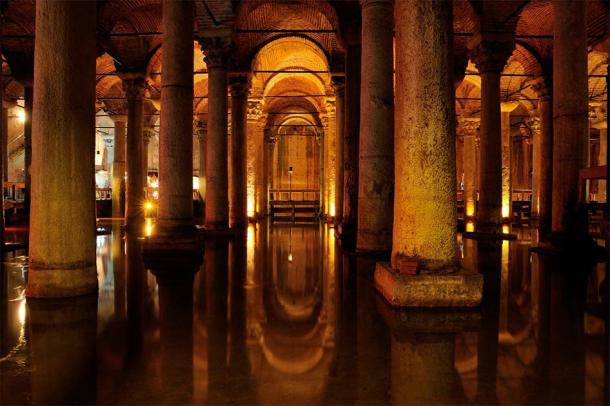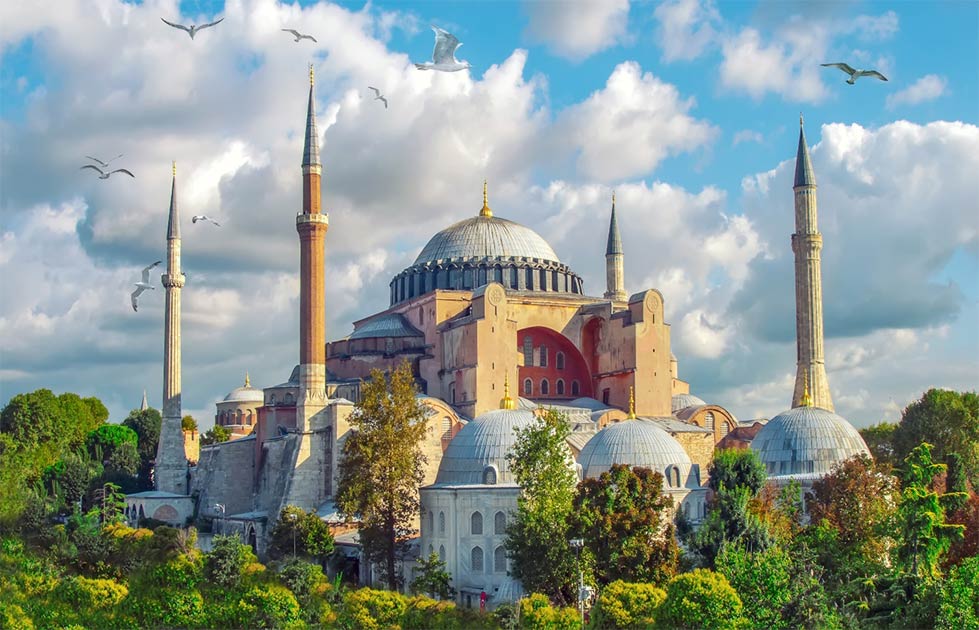Mapping The Lost Subterranean Christian Origins Of Hagia Sophia
At one time a cathedral, later a mosque, and now the chief museum of the Turkish Republic, Hagia Sophia, in the ancient Byzantine imperial capital of Constantinople (now Istanbul), was a world-famous architectural monument in both the Byzantine and Ottoman empires. Located in the heart of Istanbul, a city fusing symbolic and architectural characteristics from these two very different cultures, Hagia Sophia synthesizes both Ottoman and Byzantium religious beliefs under one magnificent dome. Now, a team of British-and-Czech-led researchers have uncovered and mapped the ancient subterranean realms of Hagia Sophia.

An archaeologist descending below the main floor of Hagia Sophia to the subterranean realms below. (Beneath The Hagia Sophia)
The Subterranean World Beneath Hagia Sophia
For over 10 years archaeologists have been tunneling into the subterranean world beneath Hagia Sophia, which for almost a thousand years was the largest conventional building in the world. The size and functionality of the original 6th-century AD cathedral that first stood upon the site where Hagia Sophia now stands has always been a mystery. However, according to an article in The Independent, “more than a kilometre of long-lost tunnels and subterranean chambers” were discovered underneath the super structure of religious worship.
- Emperor Justinian the Great: The Life and Rule of a Visionary Roman
- The Underground World of the Hagia Sophia
- Secrets of the Hagia Sophia - Healing Powers, Mysterious Mosaics and Holy Relics

The underground Basilica Cistern built by Emperor Justinian, which lies about 150 meters (490 meters) from Hagia Sophia and is usually "covered" in water. (FOTOALEM / Adobe Stock)
Hagia Sophia was allegedly built as a vast cathedral by the late Roman (early Byzantine) Emperor Justinian the Great, in 537 AD, after an angel from heaven showed him the sacred design in a vision.
According to the Hagia Sophia website, for 900 years the site was a center of Orthodox Christianity until 1453 AD when the city was invaded by the Ottomans. After the conquest of the Muslims on 29 May 1453 AD, following a 53-day long siege, for the last 500 years the sacred site has been a principal religious site in the Muslim world serving as the grand mosque of the sultans. In 1935 AD, Hagia Sophia was repurposed into a museum of the Turkish Republic.
Hagia Sophia: A Shimmering Marble Heaven On Earth
The new discoveries at Hagia Sophia, by the British and Czech archaeological team, have revealed that Emperor Justinian built his great cathedral as the central feature of a much larger complex with at least five significant religious buildings. These five buildings were: Justinian´s Grand Palace, where the Patriarch of Constantinople resided; The Great Baptistery, the site of the baptism of Emperor Justinian and his family; The Patriarchal Council Chamber, which “issued” some of Christianity's most important theological and other decisions, including, according to the Independent, “the historically very significant decision to increase the religious status of the Virgin Mary;” and The Great Library of the Patriarchs, which is associated with The Patriarchal Council Chamber.
Professor Ken Dark of England's University of Reading is co-author of a new book called Building Hagia Sophia in Context and he says “nine 6th century frescoes, two mosaics - and the previously unknown great north-western entrance complex of the cathedral” have all been discovered at the site.
The investigation also revealed that Justinian had clad his cathedral in blinding white marble, so that it would shine and shimmer over the imperial capital, an effect which the author says represented purity in both Roman and Greek traditions, reflecting the ideology of a Biblical heaven.

A purple disc-shaped spot, made from a type of igneous rock called porphyry, beneath Hagia Sophia, where the Patriarchs of Constantinople stood during important rituals. (Jan Kostenec / Oxbow Books, Ken Dark and Jan Kostenec 2019)
More Water-Locked Ancient Hagia Sophia Secrets Await
Dr Dark writes in his new book that the series of excavations have for the first time, “established how secular imperial power was actually integrated into Hagia Sophia’s spiritual rituals.” For example, a purple porphyry disc measuring 59 centimeters (23.22 inches) in diameter was discovered where Emperor Justinian and his successors stood during religious services, and similar imperial purple discs were discovered at key locations across the cathedral. These are thought to mark the routes walked by Patriarch emperors during rituals. The new book also reveals that these discs were created with magnificent purple porphyry that was imported from an imperially owned quarry in Egypt.
The Romans built an extensive network of tunnels and chambers underneath the cathedral. And because most are now are now filled with water, a team of Turkish divers explored these caverns and estimated that “more than a thousand meters of tunnels and unexplored hidden rooms” lie beneath Hagia Sophia, comprising water cisterns, and underground chapels and burial areas. And maybe once the lockdowns ease later this year these hidden aspects will finally be exposed revealing more of Hagia Sophia’s secrets.
Top image: Hagia Sophia, the world’s largest building for centuries, on a sunny day in Istanbul, and beneath this monumental structure lies a huge, largely unexplored subterranean world. Source: blackdiamond67 / Adobe Stock
By Ashley Cowie



















